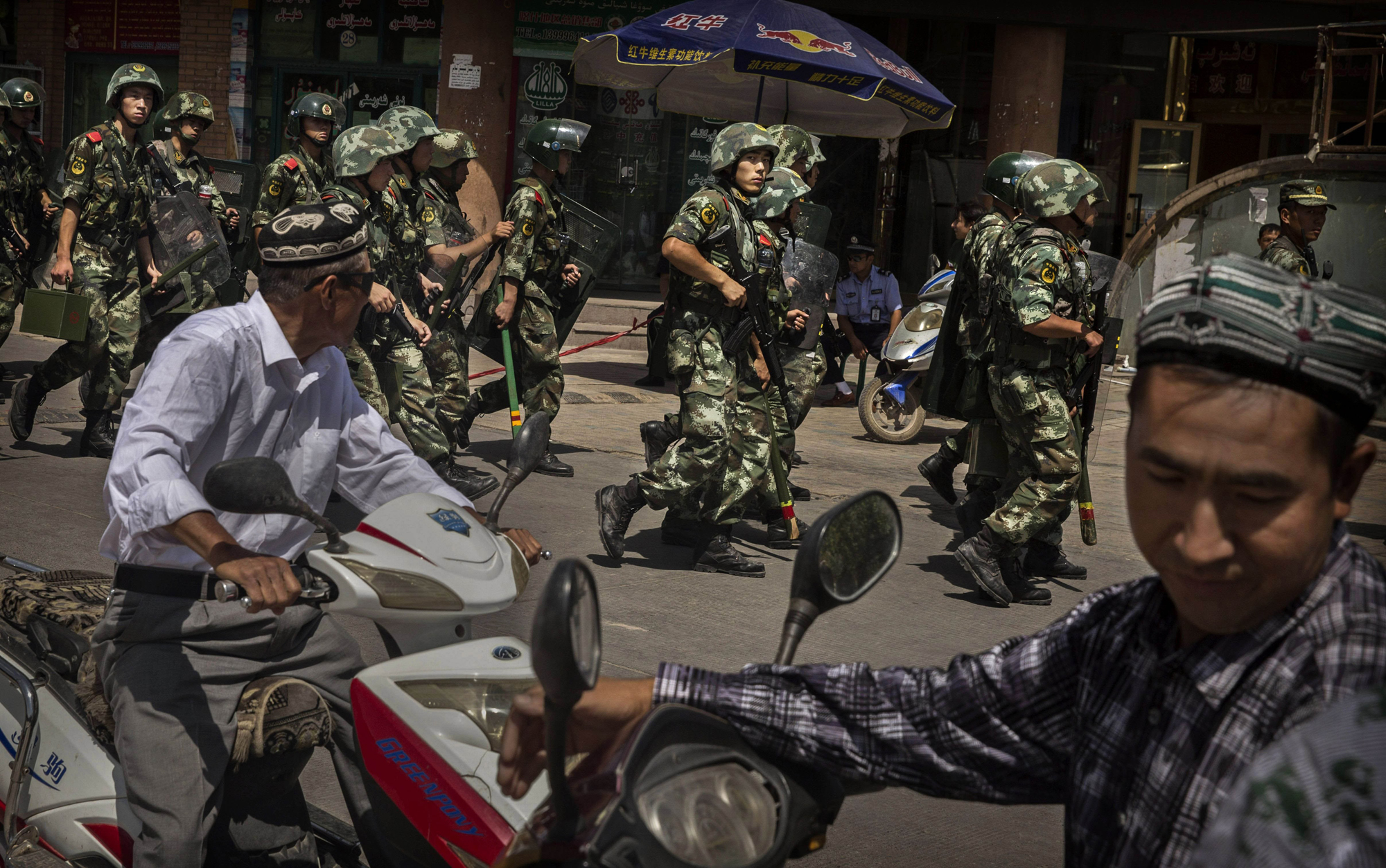
On a clear, sunny morning last October, an SUV carrying three people turned right on to Beijing’s Chang’an Avenue, plowed through crowds gathered near the entrance to the Forbidden City and burst into flames at the northern edge of Tiananmen Square. The wreck killed five people, including three in the vehicle and two bystanders. Dozens more were injured.
Almost immediately, eyewitnesses started posting pictures. The photographs showed scenes of chaos in the heart of China’s capital: a plume of smoke rising in front of a portrait of Chairman Mao; the charred carapace of the vehicle resting at the foot of the ancient Gate of Heavenly Peace. Almost as quickly as the images were posted, however, they started to disappear. It became clear that the Chinese government, and the government alone, would tell this story.
Nearly a year later, they are still pulling the strings. On Aug. 24, state-backed media announced that three masterminds behind the incident were executed, alongside five other convicted terrorists. The report listed their names and charges, but did not mention when or how they were put to death, where they were held, in what conditions, or whether they were offered legal counsel. (State broadcaster CCTV did note, however, that Usmen Hasan, the driver of the SUV, once beat a middle-school teacher and was “feared” by his wife.)
Though some elements of the official account may well be true, the reporting is clearly selective — and impossible to confirm. Hasan, his wife and his mother were killed in the crash, and the others were held out of public view. Maya Wang, a China researcher at Human Rights Watch in Hong Kong, says rights groups and foreign journalists have effectively been blocked from looking into the matter. “We are just as much in the dark about these individuals,” she says. “We have almost no independent information, except what the state press has released.”
The handling of the case is part of an effort to manage when, and how, China talks about terrorism. This past year has seen a wave of attacks, starting with the Tiananmen crash and moving, in bloody succession, to ambushes at train stations in Kunming and Urumqi in March and April, respectively. In late May, Urumqi was hit again, when attackers targeted a morning market, leaving dozens dead. Each was pinned, directly or indirectly, on “separatists” or “extremists” from Xinjiang. If and when details are released by state media, they tend to point toward a straightforward story of radicalization at the hands of overseas Islamic terrorist groups. And those reports are always followed by news of the government’s swift and effective response.
The reality is more complex. Xinjiang Uighur Autonomous Region, which borders Russia, Pakistan and several Central Asian nations, is claimed as the traditional homeland of the Turkic Uighur people — and as part of China. Since coming to power in 1949, the ruling Chinese Communist Party has sent waves of military personnel and migrants west to settle the area they call New Frontier. Many Uighurs resent the influx of ethnic Han Chinese and worry they are getting cut out of the region’s resource-driven economic boom.
A small minority of the Uighur population, meanwhile, has waged a decades-long fight against the central government, often targeting symbols of state power including police stations and government buildings. There have also been direct attacks on civilians. The ruling party has responded by beefing up security and trying to forcibly integrate the mostly Muslim Uighur population. In recent months, entire cities have been sealed off by police checkpoints. Some areas are trying to discourage, or outright ban, certain types of beards and veils.
This has not stopped the bloodshed. In July, violence broke out in Xinjiang’s Shache county (called Yarkand in the Uighur language). State media waited more than 24 hours before announcing the unrest. As soon as they did, conflicting accounts emerged, with the government saying the violence broke out after police foiled a terrorist plot, and exile Uighur groups saying police opened fire on demonstrators protesting against restrictions during the Muslim holy month of Ramadan and against the alleged extrajudicial killing of a Uighur family. The state says 96 people were killed; Uighur groups claim the figure is much higher.
We might never know what happened there. The authorities moved quickly to restrict access to the area and pulled comments from the almost-always-out-of-service web. (In times of unrest, authorities slow, or stop, Internet traffic in Xinjiang; after the 2009 riots the entire region was without Internet for nine months.) Given China’s weak record on the rule of law — and the sensitivity of the case — it’s highly unlikely that there will be an impartial investigation, let alone a fair trial. People on the ground in Xinjiang are rightly frightened that they will be punished if they comment. According to Radio Free Asia, a nonprofit media group, one blogger was already arrested for “spreading rumors” about the number of deaths.
Perhaps in 10 months we will finally hear more about the people involved in the incident. Like those killed in Beijing, Kunming, and Urumqi, the people who died in Yarkand deserve justice. The question is, what kind of justice will it be?
— With reporting by Gu Yongqiang / Beijing
More Must-Reads from TIME
- Donald Trump Is TIME's 2024 Person of the Year
- Why We Chose Trump as Person of the Year
- Is Intermittent Fasting Good or Bad for You?
- The 100 Must-Read Books of 2024
- The 20 Best Christmas TV Episodes
- Column: If Optimism Feels Ridiculous Now, Try Hope
- The Future of Climate Action Is Trade Policy
- Merle Bombardieri Is Helping People Make the Baby Decision
Write to Emily Rauhala at emily_rauhala@timeasia.com